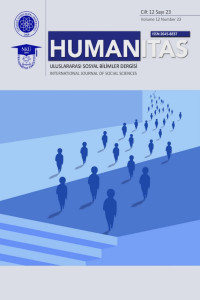DİL DEĞİŞİMİ VE YENİDEN ÇEVİRİ: FRANZ KAFKA’NIN “DIE VERWANDLUNG” ESERİ ÖRNEĞİNDE BİR İNCELEME
LANGUAGE CHANGE AND RETRANSLATION: AN INVESTIGATION ON THE EXAMPLE OF FRANZ KAFKA’S “THE METAMORPHOSIS”
Author(s): Zeki UsluSubject(s): Czech Literature, Translation Studies, Theory of Literature, Sociology of Literature
Published by: Namık Kemal Üniversitesi Fen-Edebiyat Fakültesi
Keywords: Language change; retranslation; The Metamorphosis; F. Kafka;
Summary/Abstract: This study deals with the influence of language change on translation. The first translation of Franz Kafka’s work “The Metamorphosis” into Turkish and its retranslation after sixty years were examined. In the study, the descriptive method was used and two different translations of a source text were compared. According to findings, there are significant differences between the first translation and the retranslation of the source text. It was found that language change in the area of spelling, vocabulary and language use in the target language in particular influenced the retranslation. In this context, it was considered that the spelling and the old words left out of use in the first translation made understanding difficult for target language readers. This situation can be considered one of the reasons for retranslation. But it will be a failing approach to limit the differences between two different translations with only language change. After all, one cannot claim that only certain words and structures have been changed in the retranslation. An important difference was noticed in the translation method and approach to the source text and target language readers. After these findings, it turned out that the domesticating method was carried out in the first translation. The translator does not remain faithful to the source text and translates freely in order to make the source text understandable in the target language. He formulates shorter sentences, inserts paraphrases and omits sometimes the whole sentence. In contrast, the retranslation depends on the source text in terms of form and content equivalence. The foreignizing method was used in the retranslation. For this reason it can be concluded that the retranslation not only depends on the language change and is therefore not a new edition, but has the intention of transmitting the source text to the target language readers with a new approach.
Journal: Humanitas - Uluslararası Sosyal Bilimler Dergisi
- Issue Year: 12/2024
- Issue No: 23
- Page Range: 396-410
- Page Count: 15
- Language: Turkish

